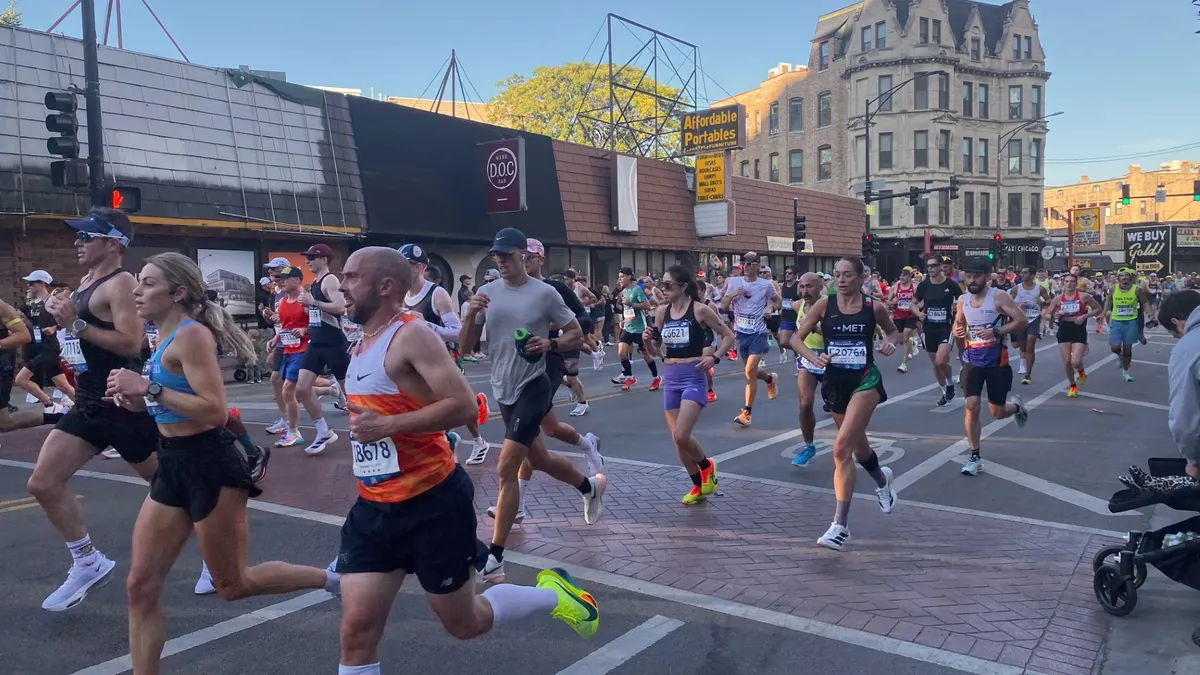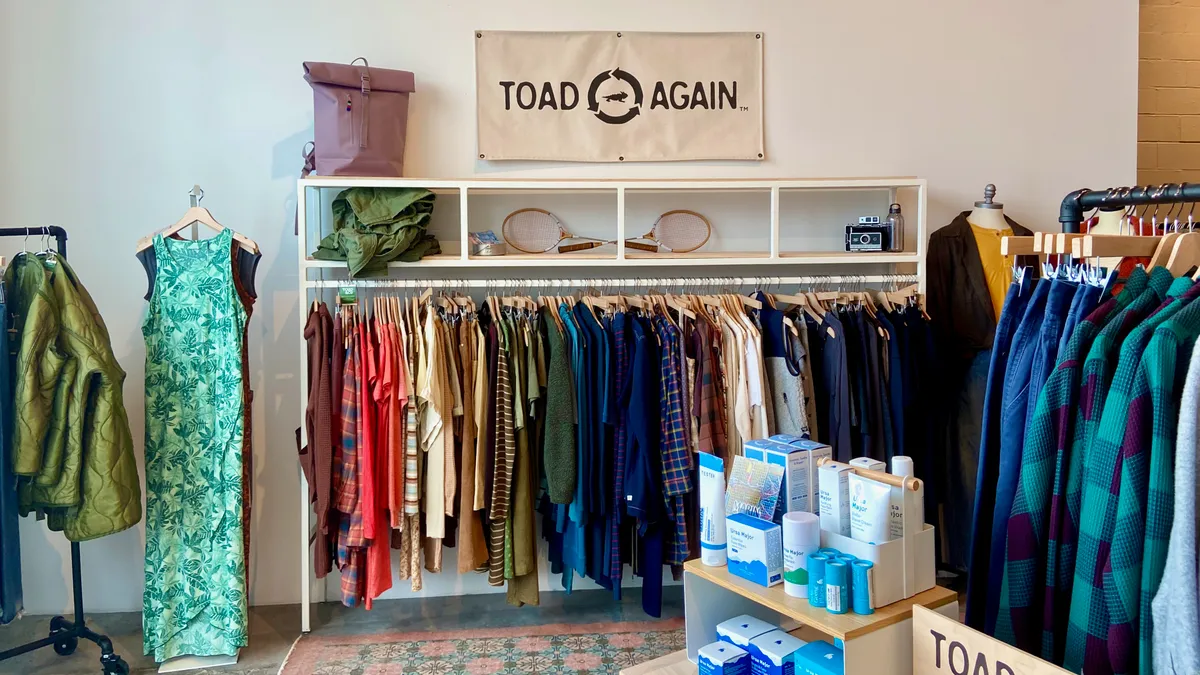Editor's Note: The following is a guest post from Lee Peterson, EVP of brand strategy & design at design firm WD Partners.
When my daughter was only six, she emerged from the depths of her closest wearing three different patterns, discordant pieces no conventional stylist would ever combine. Yet somehow it just worked. This defiant embrace of style reminded me of Anna Wintour’s famous quip: “You either know fashion or you don’t.”
Les Wexner, founder of Limited Brands, defined the skill of merchants as having a nose for finding latent demand and knowing what’s next. “Sometimes market research is like giving radar to a hunting dog. It makes him dumb,” he added.
It should go without saying that fashion isn’t reducible to a spreadsheet or a database. But our era’s obsession with data-driven decision making demands it be said. Data can never predict what is next, only what has been. There are forms of knowledge one can acquire by repetition and committed practice. But innate style might be an exception to this seemingly immutable rule. Distinct style has always been about transforming something conventional into something entirely new, less a skill than an act of courage, hubris and temperament. This has always been the energy and lure of fashion.
We have slowly been losing this revered, if unruly, priesthood. Merchants, a special and once admired class, were always a difficult type to define. A veritable hodgepodge of creatives with varied and unpredictable backgrounds. They were people who understood innately not only what styles and products were right for a moment, but how and where to present what’s next to consumers in fresh ways. It was always, always more art than science.
At the start of my career, I worked in the buying office of a national retail chain. Almost everyone was a creative of some sorts, if not always by title, then by lifestyle choices made during non-work hours. The kind of people installing dark rooms into half baths in tiny apartments, spending entire weekends on some obscure art project, or playing in underground rock bands. We weren’t data scientists or math geniuses. But we were always in touch with the scene of the moment. At the level of the store, this reliance on culture’s energy meant the kind of data critical to the daily operations of retailers today simply wasn’t a necessity.
"This increasingly widespread preference for the credentialed over the creative has ushered in its own data-obsessed priesthood."

Consider the uselessness of Kimball tickets. These cardboard price-tags were common in the ‘70s. The tags had perforations that allowed for computer processing, as well as human readable data. We would collect these tags from each item sold in the stores and ship them away to some centralized processing department. Two weeks later, we might get the crunched results, and finally know with certainty what items sold most, what was returned, etc. But this aggregated, disconnected data was mostly worthless. We’d already made all the crucial decisions about merchandising — redressed the mannequins, revamped the displays and talked to the buyers at headquarters about those red dresses. Almost without exception, the data had merely confirmed what we’d already done by instinct.
The pendulum has swung the other way, and quite dramatically over the last decade. Innate, gut-based knowledge has given way to data-driven decisions almost across the board, and not only in the fashion and retail industries, but consumer-package goods, advertising, media and entertainment. Even in fashion and apparel, it’s unlikely a buyer at a major brand got there without having first earned an MBA, or knowing their way around a P&L statement. Knowing the discography of the Sex Pistols or the first line of every Charles Bukowski poem written isn’t valued the same way a knack for database integration is today.
This increasingly widespread preference for the credentialed over the creative has ushered in its own data-obsessed priesthood. The creatives, the amateur artists, the misfits — they are all being weeded out.
Why does this matter?
What organization thrives the more homogenous it becomes? A corporate culture comprised of people with similar educational achievements and interests aren’t a competitive advantage; it is a handicap. I blame parity. The data on consumer behavior available, in specific industries, is available to almost everyone. Your competitor is likely trying to make sense out of the same piles of data.
Every thriving business organization needs someone willing to say, "that’s a stupid idea," regardless of what the data might be saying. On the flip side, every forward-thinking organization needs to cultivate an environment where someone is willing, and even encouraged, to suggest something truly game-changing: What if we made a store that sold nothing at all — but had a space for live music, coffee and beer, and there was even a fire pit?
No data set would surface such a money-losing proposition. Moreover, no data set could prove the viability of such a concept. You’d just have to do it to find out. And more than likely, it would just work.
Bonobos wasn’t a data-driven idea. It was a bunch of unruly, contrarian thinkers, a team with the guts to try something unorthodox. Let’s make the best-fitting pants possible and see what happens! No data existed to confirm this was a good idea. Yet today Bonobos is the largest clothing brand ever launched online. Or consider Nike’s flagship stores. If it had followed the data, if it had listened only to the accountants about ROI on sales per square foot, it never would have dedicated selling space to basketball courts.
"Brands make leaps because they’ve not only allowed, but cultivated space for dissent against an organization’s accepted orthodoxy."

Brands make leaps because they’ve not only allowed, but cultivated space for dissent against an organization’s accepted orthodoxy. Or even better, the conventional wisdom of an entire industry. Yes, there’s a space for data, but we must still encourage and make room for emergent styles, aesthetic judgement, and gut-driven decisions, too.
Consider the revolutionary concept upending the apparel space. In 2015, Urban Outfitters opened Space 24 Twenty, an innovative space for music, pop-up marketplaces, live music and dining. It is promoted as an “open place to come together, to hang out, and connect with the community.”
How do you even start tracking the ROI of that? While the rest of the industry has kept opening stores, or closing them in record numbers, Philadelphia-based Urban Outfitters has invested heavily into e-commerce. And instead of going on the defensive, created a new type of consumer space, one where emotional connections with consumers keep the brand relevant. The brand has also operates similar spaces in Williamsburg, New York, Space Ninety 8, and Space 15 Twenty, in the center of Hollywood.
The company’s strategy has been twofold — even as it pushes aggressively to sell more apparel directly to consumers online, it has recognized the need to retain relevance in brick-and-mortar spaces. No amount of data could have told Hayne to take on such a costly experiment.
Ironically, even one of the most data-driven organizations in the world gets why you’ve got to rethink the meaning of a “store.” Data didn’t tell Amazon to find a way to put artificial intelligence on the kitchen tables of American households — essentially turning them into stores. In 2014, it introduced Echo, after working on Alexa and Echo for almost three years. “The inspiration for Alexa was the Star Trek computer,” Rohit Prasad, VP and head scientist for Alexa machine learning, told Fast Company in 2016. That’s not a product goal or idea one would ever find in a pile of data. These weren’t fashion ideas — but someone had a nose for what’s next, and that’s why Alexa and Echo epitomize merchant thinking at its best.
Fashion and culture have always followed concurrent trend lines. There have also always been people living closer to culture’s subterranean shifts and jolts than others — and those who keep such worlds at a distance. The merchants of yore embraced such spaces with fervor and, more importantly, live their lives there. And yet, at the exact moment the industry needs such creative thinkers more than ever, it has all but stopped cultivating a space within its credentialed, data-driven corridors for the unruly merchant to exist and thrive.





















